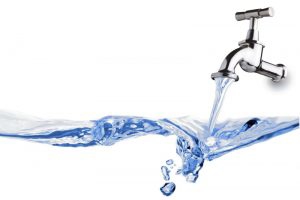
Hard water is an unfortunate plague on the plumbing in many homes in our area. The minerals that create hard water—magnesium, gypsum, various calcites—seep into the pipes carrying water from the municipal supply to homes, which is why hard water gets past chemical treatment plants.
Hard water damages plumbing and appliances, create a filmy residue on surfaces and leaves skin feeling dry and itchy. If your home is suffering under the curse of hard water, the magic to make it go away is the water softener.
How a water softener works
A water softener isn’t a standard type of water treatment system that uses filters or UV radiation to clean the water. Filters are excellent at straining out many contaminants, but they rarely are any good against hard water minerals, and UV purifiers are only designed to target organic pollutants.
A water softener instead works through a process called ion exchange. The short version of ion exchange is that it swaps the hard water ions for sodium ions, which “softens” the water. Yes, trading magnesium and calcium for salt.
Now here’s the long version:
A whole-house water softener it attached to the water main where it enters a home, so all the water from the municipal system must pass through it. The water goes through a chamber that is filled with beads made of resin. The beads are covered with sodium ions. Because of the difference in charge of the sodium ions and the hard water ions, they naturally change position. The magnesium and calcium are drawn to the beads, and the sodium is released.
The beads in the chamber can’t carry on this ion exchange indefinitely—they’ll run out of sodium eventually. The chamber is thus recharged regularly from a brine tank, which contains a solution of water and sodium. The brine washes away the collection of hard water minerals (basically going through ion exchange again, but the other direction) and leaves the resin beads “recharged” with sodium. The brine in the tank will need occasional refilling to ensure the water softener can keep doing its job.
“What if there’s too much sodium in the water?” This is something people are concerned about with water softeners. Can the water become too soft? Yes, it can. However, professional plumbers will size the water softener so there is little danger of this happening. If the high sodium problem can’t be avoided, plumbers can install a reverse osmosis filter to reduce the sodium levels and balance out the hardness in the water to the ideal levels for a home.
Professional Water Softener Installation
To take care of your plumbing in Hyattsville, MD, whether it means installing a water softener or any other job, you can depend on our team of licensed plumbers. We’ve built our business on honesty and integrity, offering great work at a fair price. We work with water softeners as well as other water treatment systems like reverse osmosis systems, UV water purifiers, and water filters.
